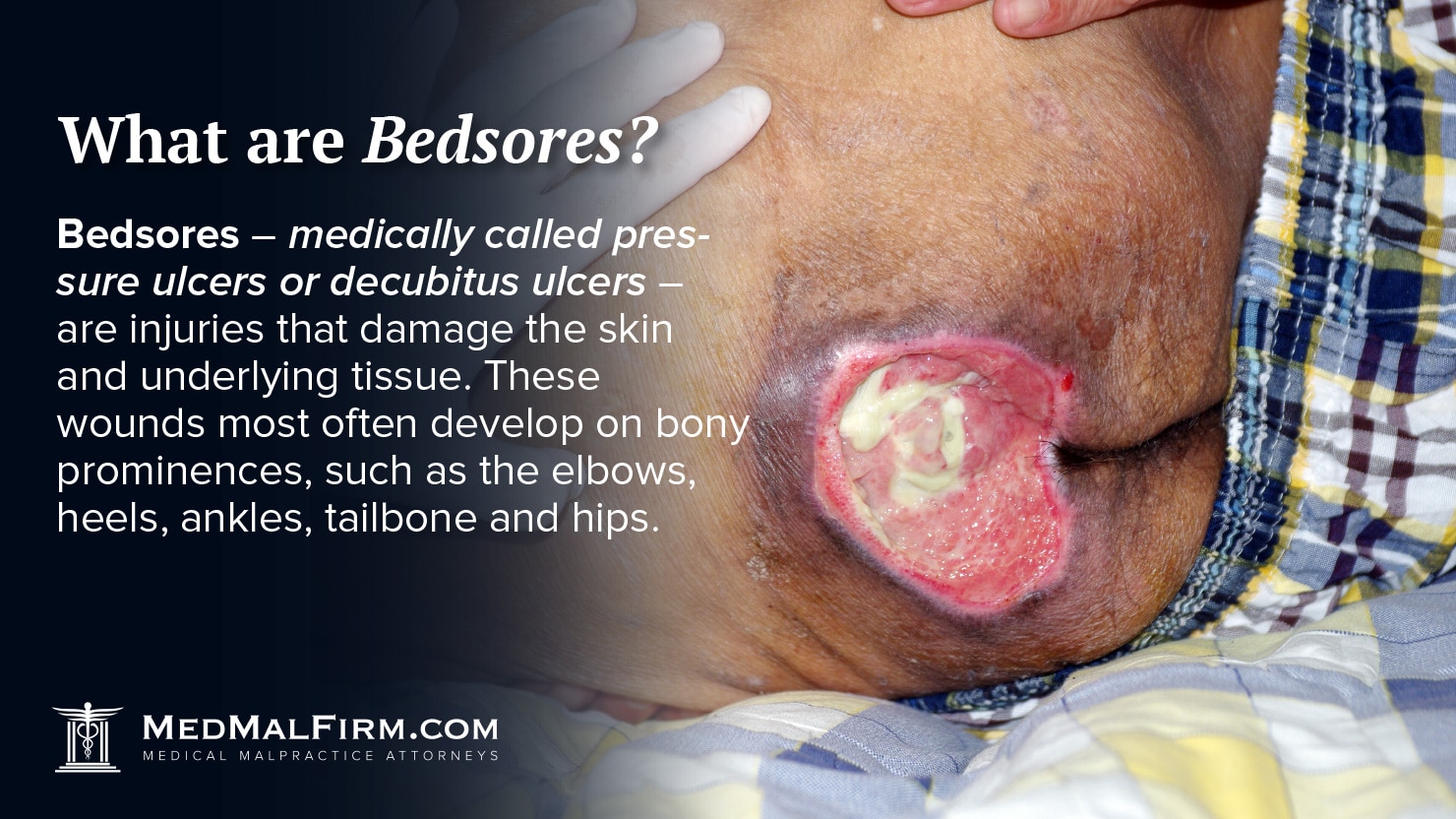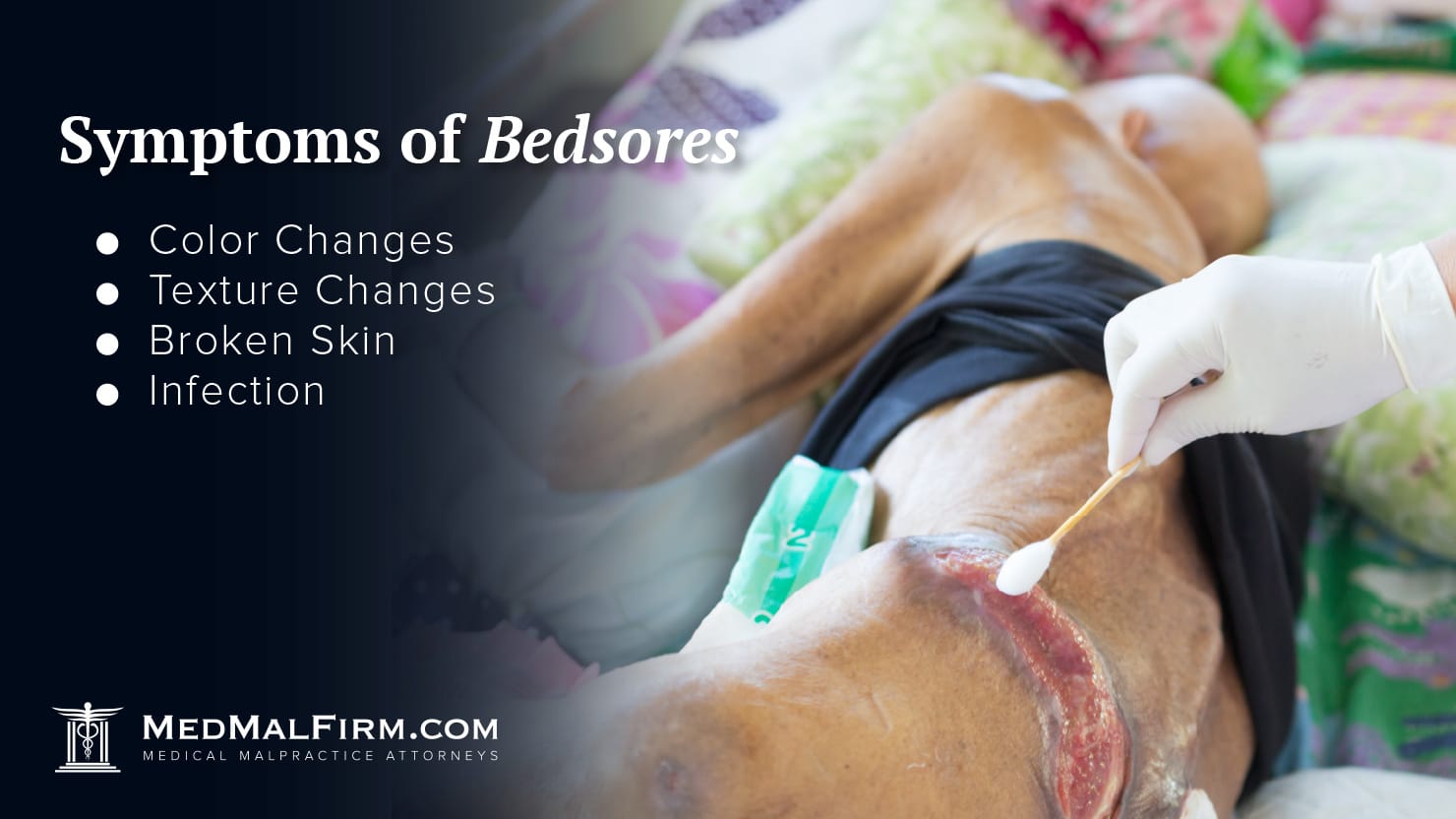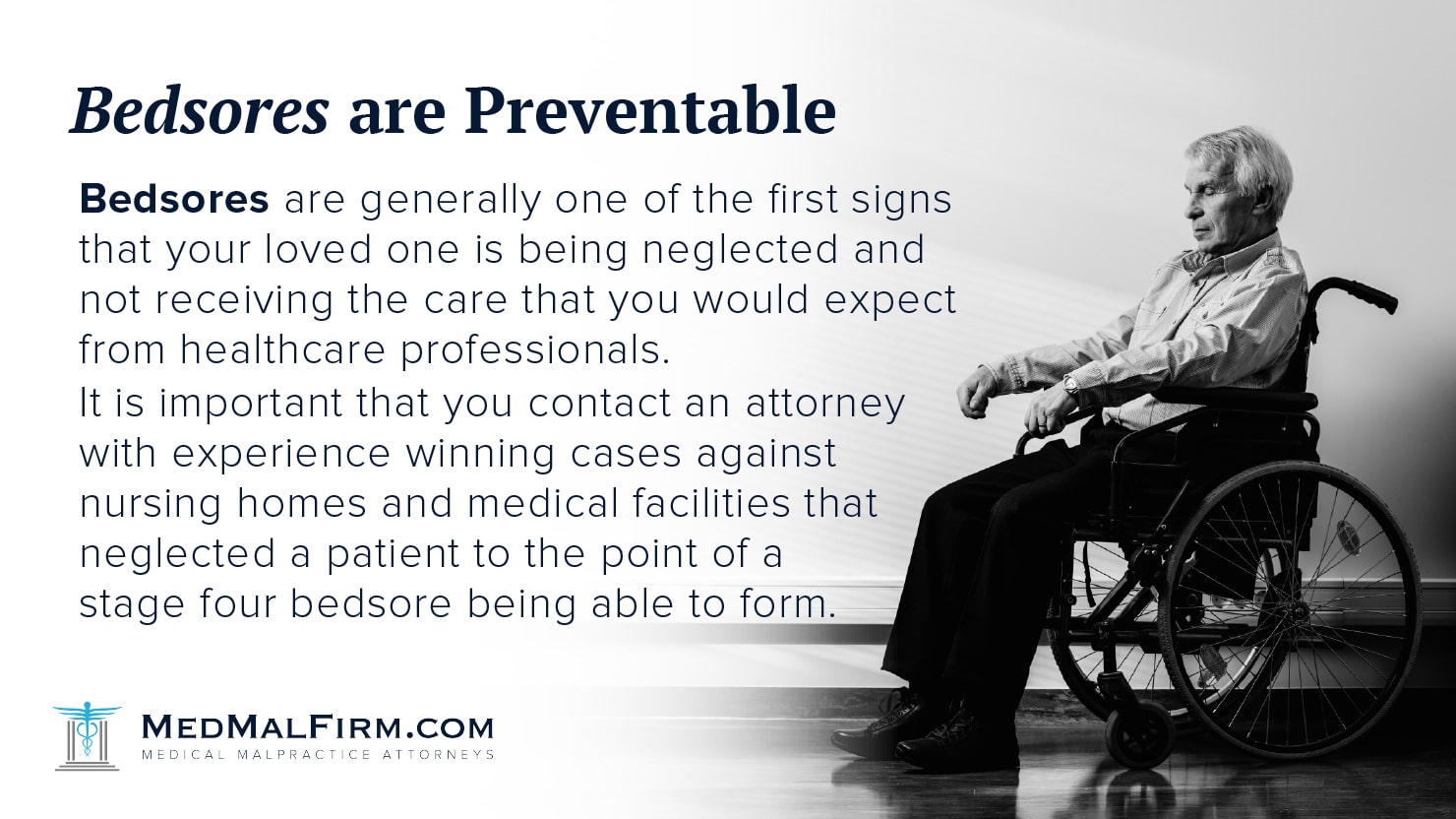Bedsores
Bedsores, also known as pressure ulcers or decubitus ulcers, are a common sign that your loved one is not being cared for properly. Bedsores form when a person is left lying in the same position for long periods of time. Pressure and friction on the skin causes damage to it, as well as to the lower layers of tissue, due to a lack of blood flow to the soft tissue.
We rely on the care of the nursing home or medical facility to take precautions so that this does not happen. Sadly, bedsores are one of the leading causes of preventable injury and death in medical facilities. Some studies suggest that as many as 3 million people in the United States suffer from bedsores each year.
What are Bedsores?

With pressure ulcers or bedsores, what may begin as a seemingly minor skin irritation can quickly become a serious wound. These wounds can cause serious medical conditions.
There are four stages of pressure ulcers, each with their own symptoms and possible risks. These stages are:
Stage 1
The area may be warm to the touch, itchy, red and appear irritated. In the first stage of a bedsore forming you would notice some redness or discoloration in the skin. If you lightly press on that area, the color would not change or lighten as it does when you press on healthy skin. Because this is the very start to a bedsore, known as stage one, it is important that it gets treated right away.
Stage 2
There is an open blister or sore. The skin around it is discolored. If the bedsore is left untreated, in stage two you will see the skin is broken and there is a shallow wound. The bedsore will be pink or red in color. You may compare it to a blister that has ruptured as the appearance is very similar.
Stage 3
The wound develops a crater-like appearance. There is obvious tissue damage below the surface of the skin. As bedsores worsen, they become more difficult to treat. Stage three bedsores are deeper and more craterlike than those you would have noticed in earlier stages of the bedsore formation. You would likely see some dead tissue in the bottom of the wound. Stage three bedsores are very serious as the damage can extend beyond the visible wound and into the underlying tissues.
Stage 4
There is severe damage to the skin and underlying tissue. The crater-like blister is an open wound that may show muscle, bones and tendons. Infection is common at this stage. In the most severe cases of bedsores, known as stage four bedsores, the wound is quite deep. It can extend down to the muscle and even the bone. When a bedsore is allowed to progress to this stage the result can be fatal.
There are also pressure ulcers that are considered “unstageable”. These are pressure sores that are so severe that it is difficult to tell just how much damage has been done. Often, when pressure ulcers reach this point, infection has spread to other parts of the body as well.
Symptoms of Bedsores
Pressure ulcers or bedsores can be difficult to identify, especially in elderly patients who may not realize the severity of the injury. It is important that family members and caregivers recognize the signs and symptoms of a pressure ulcer and get medical attention right away.

The most common symptoms of a bedsore are:
Color Changes
You may notice color changes to the skin in the affected area. Lighter skin tones may turn pink or red, or the skin may become darker. Darker skin tones may become purple, shiny or blue. If you notice skin color changes and reposition the patient, you should notice the skin color returning to normal. If it doesn’t, it could indicate a bedsore forming.
Texture Changes
Areas of the skin near a pressure ulcer may become warm to the touch. The texture may also change, becoming sponge-like or hard.
Broken Skin
A more obvious symptom of a pressure ulcer is an open wound. The wound may look similar to a blister and may have pus or fluid in it. These wounds do not adequately indicate how serious the pressure ulcer is. It can extend down into the deeper layers of tissue.
Infection
If a pressure ulcer becomes infected, there may be changes in appearance and sensation. An infected wound may have pus, green or black tissue or redness around the edges. The patient may also have a fever and other symptoms of an infection.
If you notice any of these symptoms of bedsores (pressure sores, pressure ulcers or decubitus ulcers), you should get medical attention immediately. Without immediate treatment, pressure sores can become life threatening.
Bedsores are Preventable
Bedsores are caused by pressure and friction, hence the common name of pressure sores. Because bedsores are caused by pressure and can form very quickly, they are far easier to prevent than to treat. If the care being provided by the nursing home or medical facility is quality care, the likelihood of forming a bedsore is much lower. Nursing homes must carefully assess skin health at bony prominences, such as the shoulder blades, ankles, heels, and sacral region.

Nursing homes have teams of attorneys and insurance adjusters that will do and say anything to “explain away” the formation of the bedsore, in addition to directors that will defend their employees’ actions. You need someone on your side who will fight to hold the facility accountable.
Contact Us Today
Medical Malpractice is a very complex area of law. The team at MedMalFirm.com has focused their practice on medical malpractice and nursing home abuse and have decades of experience helping clients. We can put you in touch with a medical malpractice lawyer with experience winning cases similar to yours. Contact us today.
We will review your case with absolutely no cost or obligation to you. We are here to help you and your family during this difficult time. Call us for more information about your potential bedsore lawsuit at 877-887-4850.
